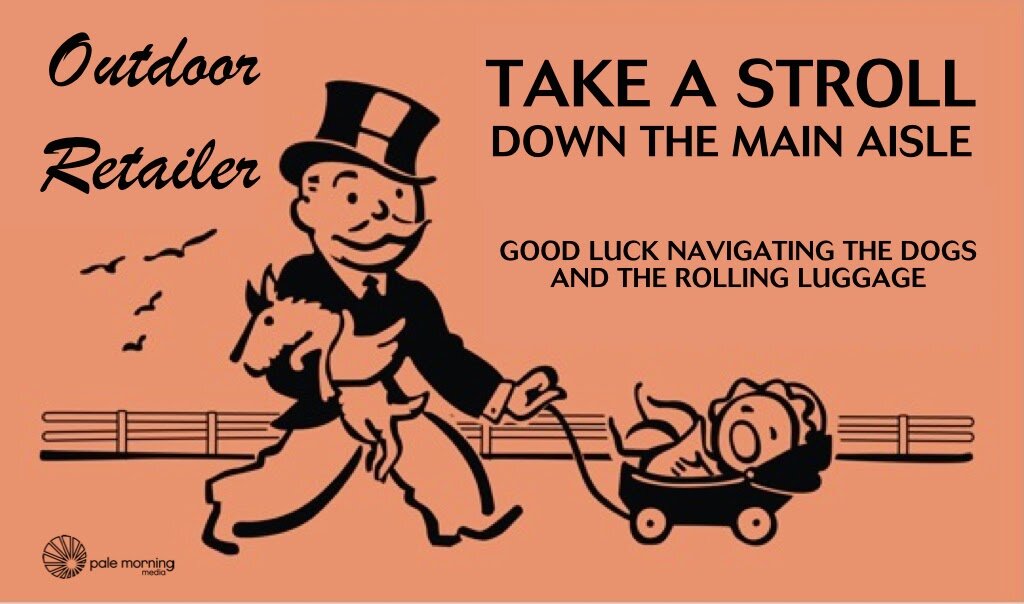Land hurts: Why the LWCF matters
One of the formative tales in outdoor culture is the origin story of the Conservation Alliance, when four iconic companies (Kelty, The North Face, Patagonia and REI) gathered together – very likely all sporting their mid-1980s short shorts, cateye Vuarnets and mink-oiled wafflestompers – and penned a single-minded charter. The idea was to create a streamlined organization that pooled resources to protect wild places where people play, that kept things lean, and that gave their funds straight to the people working on conservation’s front line.
As the story goes, the foursome decided to make their annual membership contribution a big one – $10k a year each, right out of the gate – because “it needed to hurt” to remind them all of the importance of their shared mission.
Inside the outdoor industry, that idea of "hurt" has been a popular one, spawning an Alliance that now includes 190 members and an expected giving budget of $1.6 million in the coming year. To support that effort, each of those member companies makes an annual contribution that is sizable enough to make a small bruise, yet essential enough that the check gets written without complaint.
Outside the outdoor industry, as card-carrying members of the good old US of A, we’ve got it way easier. Since 1965, we’ve had a heftly pool of money wrapped up with a bow and placed at our feet. A federal conservation piggybank known as the Land and Water Conservation Fund, this porcelain change jar fills itself each year by carving out a tiny percentage of federal leases paid by offshore oil and gas drilling operations. You get to drill and make a ton of money, we get to set aside some land.
Quietly and painlessly funding itself over the last last 50 years, the LWCF has funded $16.8 billion of postcard-worthy success stories like Grand Canyon National Park, the Appalachian National Scenic Trail, the White Mountain National Forest, and Pelican Island National Wildlife Refuge, the nation’s first federal refuge.
The fund works on the federal side by buying stuff (through agencies like the National Park Service, the US Forest Service, the Fish and Wildlife Service and the Bureau of Land Management), and on the state and local side by evenly distributing grants for parks, land preservation and easements. Chances are, your favorite outdoor place was paid for with an LWCF check.
Unfortunately, the LWCF turns into a pumpkin this September when its original 50-year charter expires. Even more unfortunate is the political climate that will surround it when it hits the floor of the Capitol.
The good news is that this obviously integral and simple mechanism only needs Congress to come together, unite behind it, and reauthorize it. The bad news is that this obviously integral and simple mechanism only needs Congress to come together, unite behind it, and reauthorize it.
“The good news is that this obviously integral and simple mechanism only needs Congress to come together, unite behind it, and reauthorize it. The bad news is that this obviously integral and simple mechanism only needs Congress to come together, unite behind it, and reauthorize it.”
During the Outdoor Industry Association lobbying event last May in Washington, DC, reauthorizing the LWCF was at the top of its very short Congressional wish list. And while it was a clear slam dunk -- barely worth talking about -- for some members of Congress, it was clearly not clear at all to other Congresspeople who seemed fond of the term "restructuring."
No doubt, this is a decision about money ... about the $900 million dollars a year that comes out of the pocket of oil and gas companies, and often goes to the preservation and protection of other public lands from just that kind of drilling.
Pitting conservation interests versus oil and gas interests is a fight that few have the stomach to pick. People like cheap gas, love driving, and have all but forgotten that Al Gore was a filmmaker. In a modern world fueled by fuel, drawing a line in the sand across from the oil and gas crowd is a half-step away from picking a fight with oxygen. And yet, there’s more than enough room between “not here, not now, not ever” and “anywhere, anytime” to make a legitimate stand.
The LWCF is essential not merely because of its effectiveness as a funding mechanism, but also because it is the banner holder for the whole idea of public land – land funded by the government and preserved in a way in which everyone has a stake, everyone gets a benefit, and has a say.
Flipping the pancake over, the other side is far darker. Failure of the LWCF would be clearly devastating to private conservation groups, whose work relies hugely on matching grants from the fund (as just one example, from 2007 to 2013, Conservation Alliance projects received more than $99 million from the LWCF).
Perhaps more devastating, failure of the LWCF to live beyond September would also effectively take the idea of proactive public land conservation and cut it off at the knees.
At this point, there’s a lot that can be done. There’s educating, there’s active legislation that can be supported, and there’s the all important reckoning that it's gonna have to hurt a little to remind us all how important this really is.
Brands who can
“As ‘brands who can’ are consistently and proactively executing ahead of the curve, season after season, the curve is moving backward to meet them. Meanwhile, those who respond to needs as they emerge are accepting a new reality of always being several steps behind”
The only true constant of public relations is that the playing field is constantly changing. Growing one day. Narrowing the next. And always picking up speed.
Sometimes that evolution is an impossible-to-miss green flash. Other times it’s a slow burn that changes everything.
One fascinating burner from the last few years has been the steady, backward creep of tradeshow deadlines. It’s more than a little counter intuitive that in a digitally powered world where just about everything else is compressing and moving forward, editorial PR needs are going the other way.
Once upon a time in the land of trade shows, a legitimate PR deadline for pre-show coverage was approximately a month prior. Thirty days was plenty of time to get the story into the hands of the right people. The shows were smaller then, of course, and people still spent dozens of hours designing and printing something called “press kits” to leave in a faraway realm called the “press room”.
On that old timeline, for a high-value show like Outdoor Retailer Summer Market, it meant for meaningful pre-show coverage you needed to have your ducks in a row by mid-June. A tidy package of set MSRPs, confirmed specs, publication quality images, and a colorful bow of a relevant context to wrap it up nicely. For many smaller brands, the old deadlines were achievable but challenging, to say the least.
Unsurprisingly, as that internal deadline has steadily pushed backward from June into early May and even late April, it’s become almost impossible for a small brand to keep pace.
One reason is that business gets in the way. Brands with a marketing department of two (or less) make up the vast majority of tradeshows, arguably 80% or more of the total exhibitor pool, and when you’ve got a single body on staff with marketing in their title, advance trade PR is an easy thing to put on the back burner.
But another big reason for the reverse deadline creep is that it's being reinforced and strengthened by brands who can handle it. They recognize that it’s a race for page space, and they embrace the hunger for editorial content by feeding it with foresight, resources, and planning.
Brands who can are not merely rolling out product earlier, they’re also executing major tactics … stuff like meticulous big-dollar mailers, intimate media desk tours, international fam trips and other creative VIP sneak peeks … way earlier than the trade show curtain goes up.
And as those 'brands who can' are consistently and proactively executing ahead of the curve -- season after season -- the curve is moving backward to meet them. Meanwhile, those who respond to needs as they emerge are accepting a new reality of always being several steps behind.
The victory here, for lack of a better word, isn't the speed of the digital world. Instead, it's the essential nature of planning.
Nepal Giving Guide
Facebook Friends
Help Boulder's Pemba Sherpa Rebuild Sengma, Nepal
Donations to Go DIRECTLY to Immediate Relief Team in Nepal
Mountain magazine (LINK)
American Himalayan Foundation, Earthquake Disaster Relief fund
Outside Online (LINK)
Indiegogo for Earthquake Nepal: Accommodation and Medical Camps
Indiegogo Life for The American Nepal Medical Foundation
Outdoor Industry Association (LINK)
PRI (LINK)
NY Times (LINK)
Habitat for Humanity International
The American Jewish Joint Distribution Committee
United Nations World Food Program







